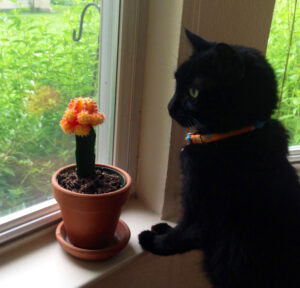Lilies were once one of my favorite flowers, but I have now banned them from my house after learning they place my cat Midnight’s health at risk. Midnight and I are very lucky that she never nibbled the cut lilies I used to keep on the coffee table, because even a small snack could have threatened her life.
While it is still unknown what exactly causes lilies to be so toxic to cats, it is certain that eating any part of the plant such as the leaves, flowers, pollen, or vase water will cause kidney failure and death if untreated. Fortunately Midnight would rather stick to kibble for dinner, but she often uses the cactus on my windowsill as an ear scratcher and loves to rub her face against leafy plants. If she did the same to a lily, the messy pollen could have fallen onto her fur and she would have ingested it while grooming if I didn’t bathe her quickly.
It can take as little as six hours after ingestion for cats to show signs of toxicity such as lethargy, vomiting, diarrhea, loss of appetite, thirst, and drooling. Recovery is possible, but immediate veterinary attention is essential. Because inducing vomiting, activated charcoal, hospitalization, IV fluids, and monitoring urine and blood work are needed, lily toxicity can not be effectively treated at home. Even with veterinary attention, the chances of survival depend upon how much plant material was eaten and how long it took the cat to receive treatment.
Even though Midnight and I have been together for the majority of both of our lives, I was completely unaware that some commonly found plants could cause her serious harm until recently. Sadly, many cat lovers like myself have unintentionally placed deadly toxins within their cat’s reach before learning about the risks. But now I know certain types of plants endanger Midnight, so I check to make sure a new plant is safe for Midnight to eat, sniff, and touch before adding it to my windowsill.
The best way to avoid lily toxicity is to not keep lilies in your home (or garden if your cat goes outside unsupervised). Because lilies are not the only toxic plant, make sure any plants kept in your home are non-toxic to cats. If your cat eats a plant that might be toxic, call your vet as soon as possible.


